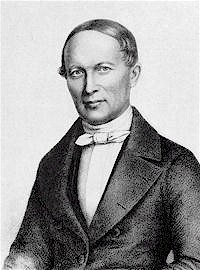Robert Blackwell - From http://en.wikipedia.org/wiki/Robert_Blackwell
 "Robert "Bumps" Blackwell (May 23, 1918 – March 9, 1985) was an American songwriter, arranger, and record producer, best known for his work overseeing the early hits of Little Richard, as well as grooming Ray Charles, Quincy Jones, Lloyd Price, Sam Cooke, Herb Alpert, Larry Williams, and Sly and the Family Stone at the start of their music careers. He should not be confused with another songwriter: Otis Blackwell.
"Robert "Bumps" Blackwell (May 23, 1918 – March 9, 1985) was an American songwriter, arranger, and record producer, best known for his work overseeing the early hits of Little Richard, as well as grooming Ray Charles, Quincy Jones, Lloyd Price, Sam Cooke, Herb Alpert, Larry Williams, and Sly and the Family Stone at the start of their music careers. He should not be confused with another songwriter: Otis Blackwell.Born Robert Alexander Blackwell in Seattle, Washington, he led a jazz group in the late 1940s that included pianist Ray Charles and trumpeter Quincy Jones. He moved to Hollywood, California to continue study composition, but he instead took a job at Art Rupe's Specialty Records as an arranger and producer. He worked with Larry Williams, Lloyd Price and Guitar Slim, as well as producing Little Richard's rise to stardom in 1955.
In addition to producing Little Richard's breakthrough hit "Tutti Frutti" following hearing him sing the song in the studio, Blackwell also produced Little Richard's other mid-50s hits, co-writing some as them as well, including: "Long Tall Sally"; "Good Golly Miss Molly"; "Ready Teddy"; and "Rip It Up". They all quickly became rock and roll standards, and have subsequently been covered by hundreds of artists including Elvis Presley, The Beatles and Creedence Clearwater Revival.
He also produced Sam Cooke's hit "You Send Me". Blackwell left Specialty in 1957, taking Sam Cooke with him to Keen Records. He was the West Coast A&R director for Mercury Records from 1959 to 1963, and produced Little Richard's gospel recordings for that label. He became Richard's manager and continued to work with him into the 1970s.
In 1981 Blackwell produced some songs for Bob Dylan's album, Shot of Love, including the title track.
Blackwell died at his home in Hacienda Heights in Whittier, California in 1985 of pneumonia."
John Marascalco - From http://en.wikipedia.org/wiki/John_Marascalco
John Marascalco (born John S. Marascalso, 27 March 1931 is an American songwriter, who is most noted for his collaborations with Robert Blackwell. Marascalco had a hand in some of the big R&B and rock and roll hits of the 1950s and 1960s.
Together with Robert Blackwell, he wrote the songs "Good Golly Miss Molly", "Ready, Teddy", and "Rip It Up" made famous by Little Richard. Like Norman Petty with Buddy Holly, Robert "Bumps" Blackwell put his name on the songwriting credits although Marascalco was the actual writer of the songs. Also for Little Richard, Marascalco co-wrote "Heeby Jeebies", "She's Got It", and "Groovy Little Suzy". He also co-wrote the song "Goodnight My Love" with George Motola made famous by Jesse Belvin and Paul Anka.
Furthermore he co-wrote songs with Fats Domino ("Be My Guest"), Scott Turner and Harry Nilsson, and helped to finance Nilsson's early recording efforts. Marascalso and Turner collaborated on songs for Nilsson, such as "I Just Ain't Right" and "Building Me Up," both of which appear on the albums Nilsson '62: The Debut Sessions and Early Tymes. Marascalco and Nilsson wrote songs together, including "Baby Baby" and "Born in Grenada" (Spotlight on Nilsson).
Marascalco co-composed "Send Me Some Lovin'" with Leo Price, and this was recorded by Little Richard. The Crickets for their 1957 debut album, The "Chirping" Crickets, Sam Cooke, and John Lennon also recorded the song. He also penned "Wouldn't You Know", which was recorded by Billy Lee Riley.
Marascalco tunes have been recorded by everybody from Little Richard to Creedence Clearwater Revival to the Stray Cats.










.jpg)






.jpg)

